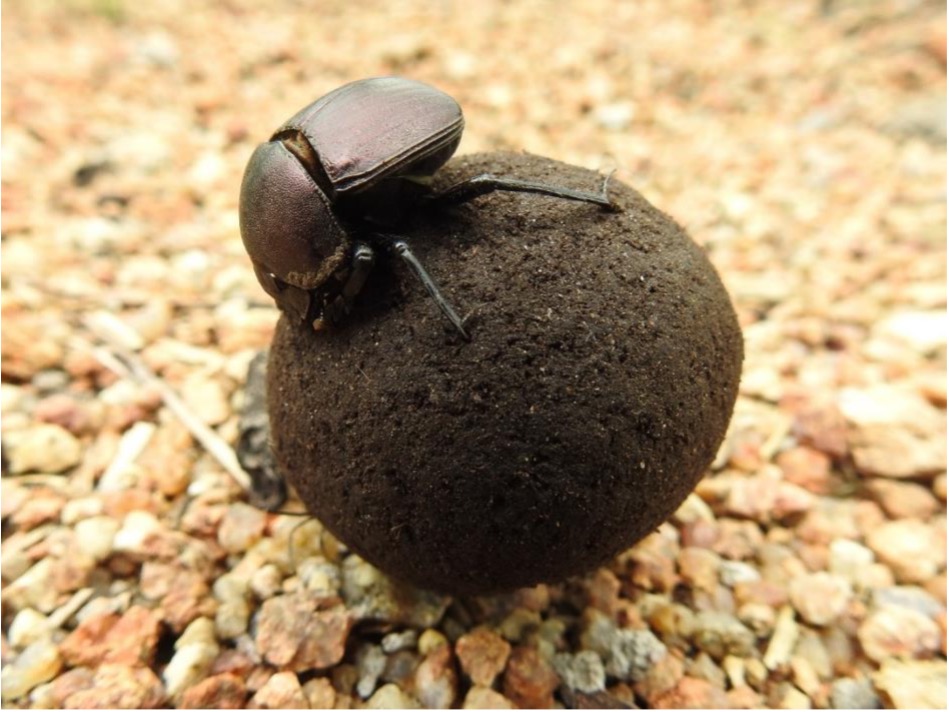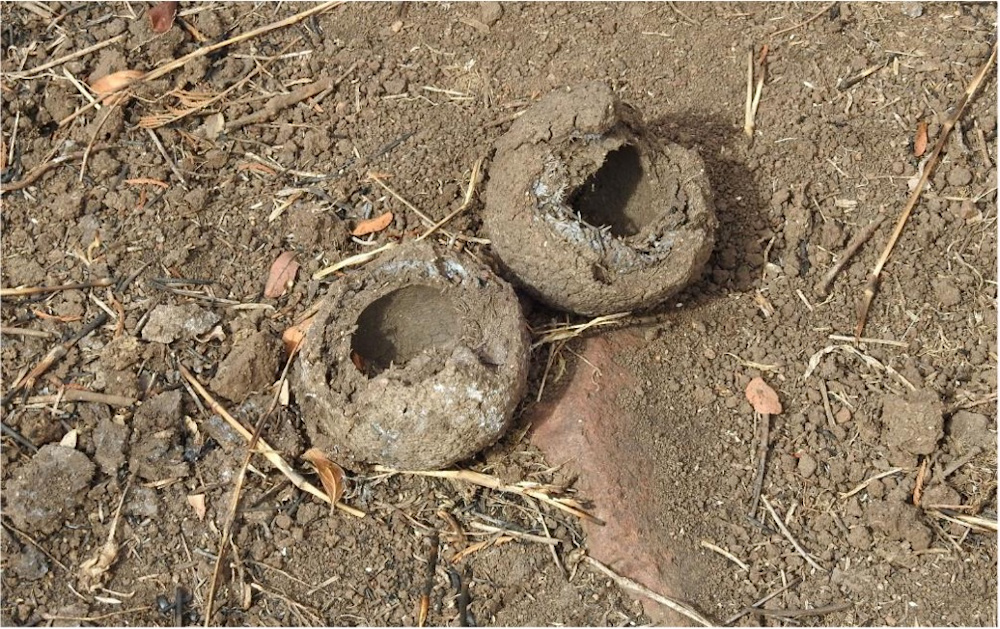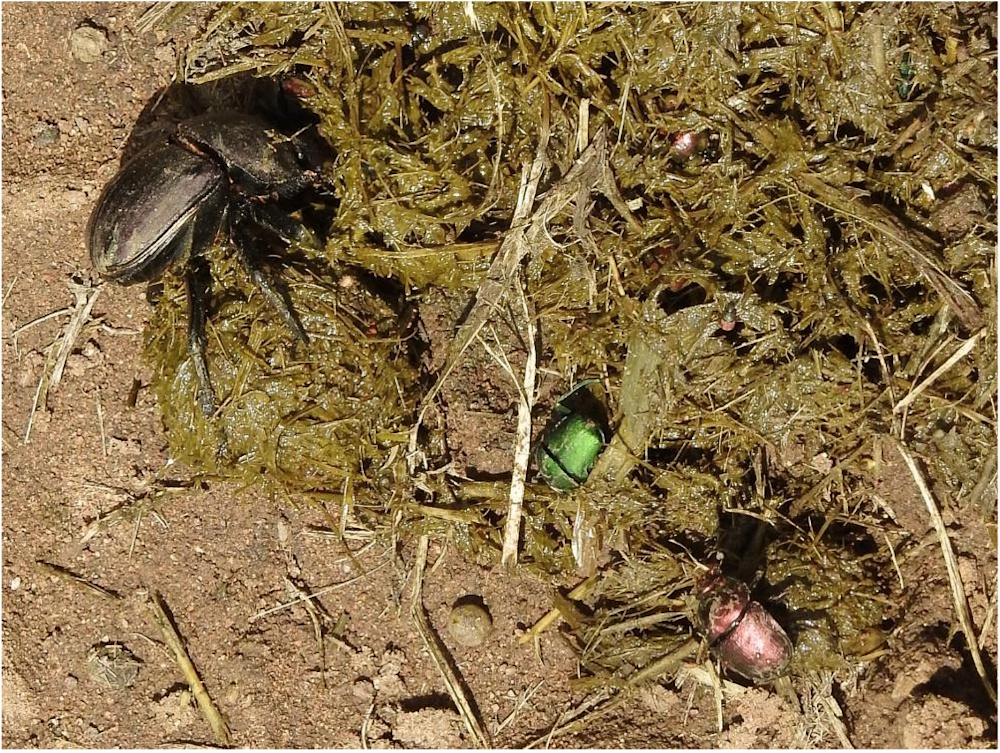January 2021
Dung Beetles
Share:
Dung Beetles
Summer is here and the rains have arrived. The bush is lush and the grass is long. There are flowers scattered all over the concession, not in large stands, but often individually, like shy fairies hiding in the grass. Although it may be difficult to see some of the animals (particularly the shy, elusive, smaller mammals) because of the thick vegetation and long grass, it is the time of the greatest biodiversity and abundance. The reptiles have come out from their hibernation hidey-holes and the migrant birds have arrived back from where they were during our winter months. They have come back to take advantage of the feast of insects that now abound. Dragonflies dart through the air at every pan (temporary water pool) and above the grasslands, chasing other insects and finding partners to with which to mate. Butterflies flutter by above the bushes and hillsides, adding colour to the bush. Ants march in columns, like soldiers, across the roads as they search for food and go on raiding parties. There is so much activity going on for us to watch if we pay attention to the smaller things.

One of the most interesting creatures that we get to see at this time of the year, in my opinion, is the humble dung beetle. Guests are often fascinated to see them rolling their dung balls along the road, pushing the ball along, trying to get it over the ridge at the side, often only to have it roll back down the way they have come from. The dung beetles never seem to give up and do not seem to be defeated by this, but just start all over again and carry on trying to push it over the side. They are certainly persistent creatures and do not just abandon the task because it seems difficult.
Dung beetles feed on faeces. The adults feed on the liquefied form and the larvae feed on the solid matter. The male dung beetle finds a fresh dung deposit and then uses his flat disc-like head to manipulate the dung and pat it to form a ball. Dung beetles heads are shaped like spades in order to be able to manipulate the dung into balls.

Brood balls – dung balls that were buried by the beetle and dug up by a predator (e.g. honey badger) to eat the larvae.
Whilst creating this artistic masterpiece the male dung beetle also has to fend off other male dung beetles who want to steal his treasure. Female beetles are also attracted to the dung (it is unbelievable how quickly dung beetles are able to locate fresh droppings) and once the male has formed his ball satisfactorily the female may climb onto it and the male then rolls his ball away from the dung heap. He has to do this fairly quickly before another male comes to try and fight him for his dung and his mate. The dung beetle rolls his ball using his legs, with his head turned downwards facing towards the ground while the female rides on top. Dung beetles are extremely strong creatures and it is thought that they are able to roll balls more than fifty times their own weight. He rolls the ball backwards, pushing it blindly. When he is a fair distance away from the dung heap he needs to find a spot where the soil is of a consistency that he can dig a hole and bury the ball.
The two beetles mate and the female lays her eggs inside the dung ball. They then bury the ball deep enough under the ground to try and avoid predators and scavengers (such as honey badgers and mongooses) from digging them up and eating the larvae. When the eggs hatch the larvae then feed on the dung until they mature and metamorphosise into their adult beetle forms, when they dig their way up through the soil and exit the surface to start the whole lifecycle process again.
Not all dung beetles make a ball and roll their dung away from the midden. Scientists have divided dung beetles into four groups according to how they dispose of the dung. Some are what are known as ‘rollers’ (also known as Telocoprids) who roll the dung into balls and then burying the balls in soft soil as previously described. Others are ‘tunnellers / burrowers’ (also known as Paracoprids), taking the dung into tunnels directly under the main heap. A third category are known as ‘dwellers’ (or Endocoprids) which actually live and breed directly in the dung heap. The fourth category are ‘stealers / thieves’ (Kleptocoprids) who are those beetles that steal the dung away from other beetles or those that lay their eggs in the dung balls made by other beetles. There are many different species of dung beetles in the world (it is estimated that there may be up to 800 species of dung beetles in southern Africa alone) and we often see many varied species of dung beetles in a single pile of manure. Some are particularly pretty with shiny, iridescent ruby-red or emerald-green colouration.
Dung beetles play an important role in the ecology. They not only remove the majority of dung (which attract other pests such as flies) through the summer seasons, but also destroy the eggs of internal parasites that are in the dung thus reducing animal parasite populations. Furthermore, dung beetles also move the seeds of various plants around (that the herbivore originally ate) and even plant them by burying them beneath the soil. Dung beetles also play a role in returning nutrients to the soil and by digging the soil they also aerate the ground and bring top-soil to the surface.

Three different species of dung beetles
An interesting account of the ecological value of dung beetles occurred in Australia in the mid nineteen-hundreds. The dung beetles that occurred naturally in Australia at the time concentrated on marsupial droppings. When cattle were brought onto the continent the dung beetles continued to utilize the marsupial droppings and not the foreign cattle droppings. This led to large amounts of cattle faeces lying around and attracting flies and forming good breeding grounds for them. This led to a major increase in fly numbers (now you might understand why Australian hats were depicted to have corks hanging from the brims to keep the flies from landing on their faces). Furthermore, much of the cow-patties just dried up in the hot Australian sunlight and therefore the nutrients that they contained did not recycle back into the soils. The way the Australians tackled and eventually eased the problem was to import various species of dung-beetles from other countries (specifically South Africa and Hawaii), which then utilized the cattle droppings and actually made the grasslands and pastures more productive again.

By Brian Rode
Senior Field Guide